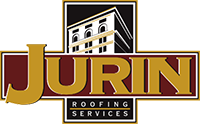Metal Roof Repair Solutions: How to Solve Your Leaking Metal Roof Problems
Do you own a building or home with a metal roof system?
You might be responsible for managing a commercial or industrial property that has a standing seam metal roof system. Metal roof systems represent a significant portion of the overall roofing systems in the United States. The chances are very good that you have come across a metal roof on a building that you are responsible for.
If you have been responsible for a metal roof system you most likely have had to deal with metal roof leaks. The details that make up a metal roof are unique to these systems. And as a result the repair options are unique as well.

Metal roof systems are used on a wide variety of buildings. They are installed on residential applications which tend to be on steep slopes. They are also installed on commercial and industrial buildings. Some industrial buildings utilize the metal roof system as both the waterproofing system as well as the structural roof deck.
Have you experienced roof leaks on your metal roof system?
If you have you are not alone. Metal roof systems are prone to leaking conditions in certain areas.
As the old saying goes, the devil is in the details. Nowhere is this truer than in the installation and maintenance of metal roof assemblies.
Some common metal roof issues:

Before we jump into the areas where metal roof leaks develop, let’s look at a few of the major design characteristics of a metal roof system.
Structural vs. Architectural Metal Roof Systems
Metal roof systems can be installed as an architectural metal roof assembly or as a structural metal roof assembly. The primary difference between the two is the use of a structural roof deck.
An architectural metal roof system is installed over a separate structural roof deck. These systems can be found on most residential applications. They may also be found on commercial buildings such as shopping centers where there is a separate deck that supports the metal roof panels. The main characteristic of this type of metal roof system design is that there is a separate structural deck that supports the metal panels.

A structural metal roof system is just as it sounds. This design uses the metal roof panels as both the structural deck for the roof as well as the waterproofing system for the building. These metal roof systems are typically found on pre-engineered metal buildings. These metal roof systems are installed using clips that attach the panels to the horizontal purlins for the building. There is normally a batten insulation that is laid across the purlins before the metal panels are installed.

Hydrostatic vs. Hydrokinetic Designs
A separate design characteristic of a metal roof system is the slope. Metal roof systems can be installed in either a steep slope or low slope application. Forgetting to consider the slope can be a major source of problems for metal roof systems.
It is important to consider the slope of the roof when designing, installing and maintaining a metal roof system. The NRCA (www.nrca.net) defines a low-sloped roof system as any roof with a slope less than 3:12. All other roof systems are considered steep sloped.
Hydrostatic metal roof systems are designed to hold water until it can drain. These roof systems are capable of holding water without the roof system leaking. Typically these metal roofs are found on larger pre-engineered metal buildings. These larger structures are more costly to design with a steep sloped roof assembly. Additional hydrostatic metal roof systems can be found on residential applications. Tin and copper metal roofs can be installed with soldered flat seams in a hydrostatic system.

Hydrokinetic metal roof assemblies are designed to shed water. These systems are designed for steep slope applications. Steep sloped applications are found on residential and commercial applications where water cannot remain on the roof system. If the water is retained on the roof system it can create hydrostatic pressure forcing water into the details and creating metal roof leaks.

Metal Roof Leaks…The Devil is in the Details
Mistakes in the design and installation of a new metal roof are sources of major problems. Typically the areas where problems occur are not in the system selection. The majority of the problems that cause metal roof leaks are related to the details used to finish the metal roof system. These mistakes are not immediately evident after the installation. They may take time to develop.
Here are five of the most frequent problems encountered during a metal roof condition assessment.
Openings in the Horizontal Seams
It is difficult and sometimes not possible to make metal roof panels that extend the full rafter length of the building. In some designs the project designer will limit the length of the panels based on expansion and contraction.
As a result of the restriction on panel length, the installer has to install horizontal seams into the roof system. These horizontal seams run perpendicular to the standing seams in the metal roof.
Horizontal seams are prone to separation over time. In hydrostatic metal roof systems, this can create an opening that allows water to enter back into the building.

Openings in Penetration Flashing
Metal roof systems are prone to expansion and contraction. This is a result of the metal panels moving because of temperature changes. This movement creates stress at points of attachment as well as at the penetrations through the roof system. The stress leads to the breakdown of the flashings at the penetrations which results in roof leaks.
Metal roof systems are constructed by attaching individual metal panels together at the seams. Once the metal roof systems are installed they are very difficult to remove and disassemble.
Unlike an asphalt shingle system they do not disassemble to allow for a repair of penetration flashing. This makes long-term repairs more difficult to address especially if the penetration is installed after the metal roof is installed.

Metal Roof Oxidation
Metal roofs are made from a wide variety of materials. These include steel, aluminum, tin, copper and zinc. Some of these materials are subject to oxidation. Most metal roof panels are made from sheet metal that has been coated with a protective surface. Over time this coating can wear away leaving the metal panels to oxidize.
Surface oxidation can lead to problems. These problems can include structural failure if the metal roof system is a structural system. Oxidation also impedes repairs. Metal panel oxidation at exposed fastener heads can make sealant application difficult.

Fasteners Backing Out
Metal roof systems typically include a combination of exposed and concealed fasteners. These fasteners can be nails or screws. Exposed fasteners typically have a neoprene washer that seals the fastener head to the surface of the metal roof panel.
Overtime fasteners have a tendency to back out of their seated position. This can be for various reasons. Wind uplift can lead to fastener back out. Metal panels will vibrate under wind conditions leading the fasteners to back out. Freeze-thaw can also lead to fastener back out. As the neoprene washer dries out water can enter in. In winter time conditions the water can freeze and expand leading to the fastener back-out.

Open Ridge/Headwall Flashing
Roof systems need to terminate into other conditions on the surface of the building. These conditions include rising wall details where the roof system matches into other surfaces. An example of this would be a metal roof system ending into a rising wall below a sign band on a shopping center.
This is an area where weakness typically develops. In many cases it is because of poor detail from the original installation. These details require closure strips to prevent water from blowing back into the detail. Contractors may forgo the installation of this closure strip. Initially the underlayment waterproofs the roof system against the blow-back. As the underlayment ages moisture can penetrate into the roof system.

There are other sources of potential metal roof leaks. These five are very common sources that can be checked initially. Knowing where to look for potential leaks is only half of the battle.
Now let’s look at some metal roof repair and replacement options and solutions.
Metal Roof Repair and Replacement Options: Repair versus Restoration versus Replacement
Building owners and managers have three primary options when dealing with their roofing systems. They can repair the roof system, restore the roof system, or replace the roof with a new roof assembly.
So when you are faced with leaking conditions on your metal roof system you need to decide if you are going to repair, restore or replace the roof system.
Metal Roof Option #1 – Repair and Maintain
Metal roof systems can be repaired and maintained. These roof systems may have an estimated use life of 30 years or more if the original installation was a quality installation. It is strongly recommended that metal roof systems be reviewed on a bi-annual basis to catch problems early on before they develop further.
The key to maintaining a metal roof system is to review the roof system on a regular basis. It is best to catch problems early on before they can develop further. Problems including oxidation can be addressed early on for a reduced cost. Locating fasteners that have started to back out before and re-tightening them can reduce leaks and help maintain the roof system.
Metal Roof Option #2 – Restoration
As a metal roof ages the frequency of leaks will normally increase. Eventually the rate of leaks and the overall condition of the roof system will require a more significant scope of work. The roof will continue to age without implementing a restoration scope of work. There is a limited window of opportunity to implement a restoration program before a replacement becomes necessary.
Metal roof restoration typically consists of a specific set of steps. These include repairs to the deficiencies noted above including fastener replacement and a rust inhibitor. Additional repairs to details and penetrations may be necessary. After the repairs have been completed it is recommended that a coating be applied to the surface of the roof system.
There are two primary types of coating materials. These are acrylic coatings and urethane coatings. Both are options when looking at metal roof restoration. Each has restrictions which need to be considered when designing the restoration solution.
Metal Roof Option #3 – Replacement
A newer innovation for metal roof replacement is the metal retrofit system. This system is used when a low sloped metal roof system requires replacement. Typically this system is installed over a structural metal roof system where the existing roof system becomes the metal deck for the new roof system.
How it Works
The metal retrofit system is installed by filling in the area of the metal panel between the metal ribs with an insulation board. This creates a flush surface. After the infill is installed an additional layer of insulation board is installed creating a solid surface to apply the roof membrane to. Finally a new single ply membrane is installed.
Simulated Standing Seam
There are specific situations where a metal roof look is desired but where job conditions prevent the installation of the system. Jobs which are complex in layout or where a non-nailable deck surface is present may limit the use of a traditional metal roof panel.
Single-ply manufacturers have designed simulated standing seam roofing assemblies to meet the needs of these unique projects. Sarnafil has designed the Décor System to address this unique project condition. The system features a standard PVC roof system. After the roof system is completed, a simulated standing seam rib is applied to the roof surface. This gives the look of standing seam but with the benefits of a single-ply membrane system.
Check out the below project profile for the installation of the Décor Roof System for Grand View Hospital.
Traditional Metal Roof Systems
There are projects where the look and feel of metal roofing is the best solution. There are multiple types of metal roof panels ranging from metal roof shingles to standing seam metal panels. The best application is different for each project and building.
Not sure which method would be best for your building? Jurin Roofing can help analyze your current roof and help you decide which method would be the most cost effective. Call us today at 800-710-7525.









